Daniel Miller
Source - http://www.abc.net.au/news/2012-07-16/ancient-village-holds-lifestyle-clues-for-archaeologists/4130628
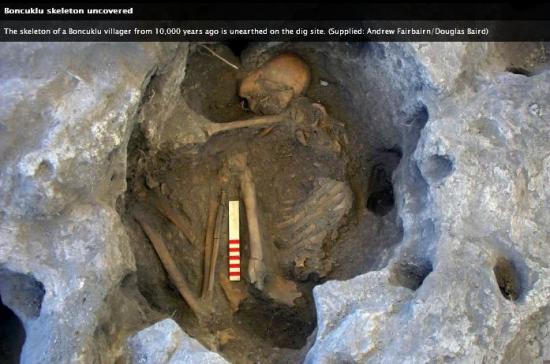
Australian archaeologists are embarking on a study of one of the earliest ever records of a key transformation in human history: the end of the nomadic lifestyle. The team, headed by Dr Andrew Fairbairn from the University of Queensland, will join with a British team next week to continue work on the excavation of a 10,000-year-old early village site in central Turkey. The site, known as Boncuklu Höyük, is one of the earliest village sites found from the period when hunter-gatherer societies began to leave their nomadic lifestyle and take up farming. Villagers lived in oval-shaped, mud brick houses and hunted, farmed and traded with other local communities on an area of wetlands which is now a dusty plain near the city of Konya. "It's come to be one of the key transformations in human history because, basically, the development of our civilisations is routed in a lot of these social and economic transformations that happened around about this time," Dr Fairbairn told ABC News Online. He says the site is one of the earliest found just outside the key Fertile Crescent area of eastern Turkey, Syria and Jordan where it is thought farming first originated.
The site is expected to help archaeologists understand how humans adapted to a sedentary lifestyle and how it spread across Europe. "This farming lifestyle then spreads around the world - it goes across Europe and it goes across Asia," Dr Fairbairn said. "And so where Boncuklu is is that sort of first area where you have this spread of this new lifestyle. "We've been very interested to find out whether it was, as it's always been suspected, due to farming people moving from this area of origin, the Fertile Crescent ... or whether it was due to the people who already lived there, lay hunter-gatherer societies, actually starting to develop and take up new crops and new ways of life. "So Boncuklu is one of those very rare sites that allows us to investigate that time period."
Boncuklu discovery
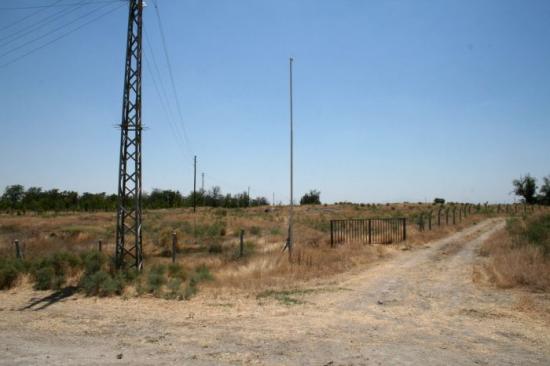
The low mound of Boncuklu is the result of repeated layers of mudbrick houses and rubbish.(Supplied: Andrew Fairbairn/Douglas Baird)
Boncuklu Höyük, which means "beady mound", was discovered about a decade ago by the head of the British excavation team, Dr Douglas Baird, who had worked on the nearby, famous village site of Çatalhöyük. Dr Fairbairn says Dr Baird was trying to place the excavation of Çatalhöyük in its regional context and, in typical archaeological fashion, found Boncuklu, which is 1,000 years older, on the last day of a field survey. Named after the high number of stone and clay notched beads found in the mound, Boncuklu first underwent excavation in 2006. Dr Fairbairn says Boncuklu has some things in common with Çatalhöyük, but in other ways it is more "alien". "It's an interesting story because Çatalhöyük in a lot of ways is sort of bizarre," he said. "It's different, but there's something tangible and you can kind of understand it because of these rectangular houses and rooms and you can see fireplaces and things. "Boncuklu is just a little bit more way out. It's these funny little huts. For me it's just something slightly more distant and a little bit more alien. "It feels quite different. A little bit like you're on a slightly different world."
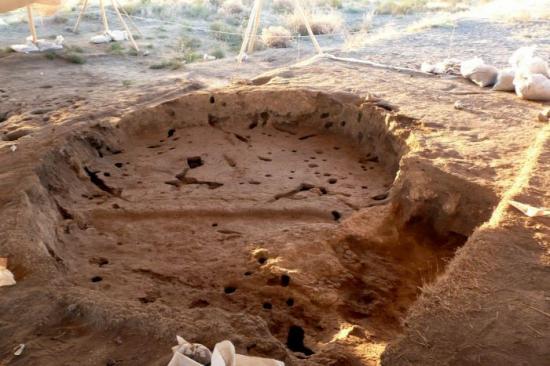
An excavated house shows a sunken floor, the remains of the mudbrick walls and a fireplace in the right of the structure. (Supplied: Andrew Fairbairn/Douglas Baird)
The excavation project will enter its second phase this year, after earlier developing and stabilising the site which was part of the local Turkish village. Dr Fairbairn says the site will be expanded over the next two-and-a-half months with the help of about 50 students and professional archaeologists, about 30 of which will come from Australia. He says a ring of huts on the mound are in the process of being unearthed, and archaeologists have found ash and bones in the centre of the huts, potentially signalling either a rubbish dump or meeting area. Over the past year the team has discovered the skulls of wild cattle embedded into the wall plaster of huts, a tradition also carried out at Çatalhöyük.
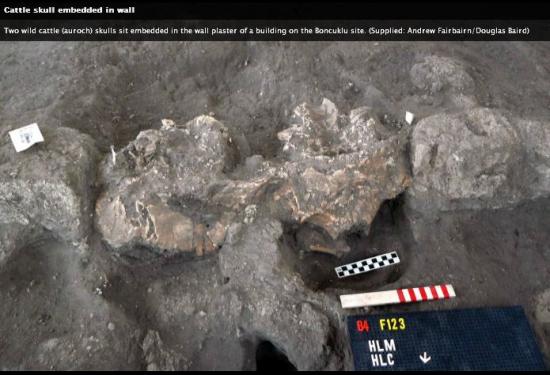
The remains of plants foreign to the area that were used as crops have also been found on land near the site, Dr Fairbairn says. "There's some kind of use of crops but it seems to be quite small - it seems to be almost quite marginal in a lot of ways," he said. "What we have is, basically, a hunter-gatherer society there that is settling down, using some crops - importing them or trading them with other settlements."
Connected communities
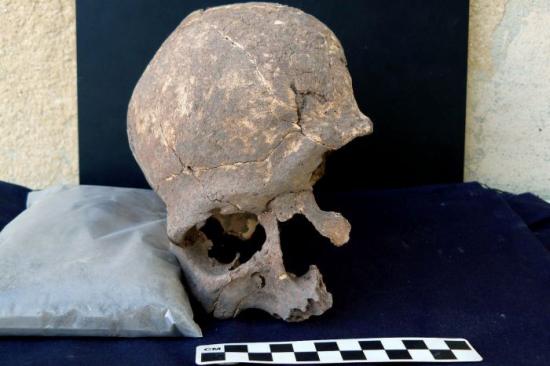
Tests on bones show males of the village generally stayed on the land, while females relocated to new villages. (Supplied: Andrew Fairbairn/Douglas Baird)
Dr Fairbairn says work done on human remains from the site has helped add to the understanding of how the village functioned and how it fit into its region.
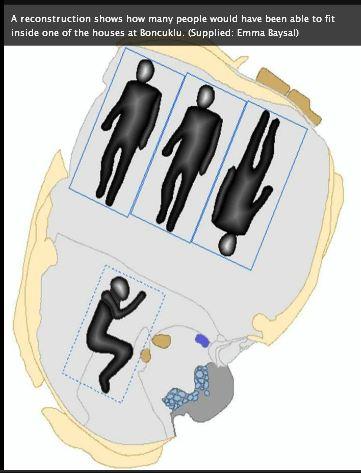
"We have a sense now from some of the stable isotope work on the bones that this is a small community that lives in contact with other people and there seems to be some kind of movement," he said. "You can look at what people eat and use that to hypothesise where they're coming from. "What we tend to find is, in a lot of ancient communities, people have the same type of diet in one community, and what that leaves is a similar carbon and nitrogen isotope signal in their bones. "You can look at the mix you actually have on your site and sort of see whether everyone is the same or whether you've got one person who is different. "And what you tend to find in Boncuklu is a picture that we're finding all the way across Europe now for this period, which is that all the men are the same and all the women are actually different." Dr Fairbairn says it appears men may have inherited land or were fixed in one place while women moved to different settlements.